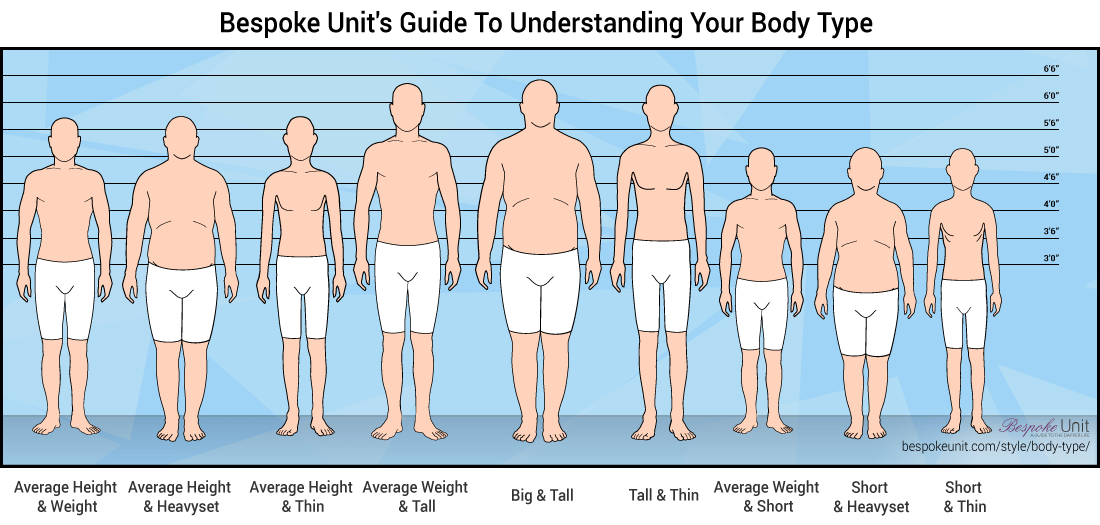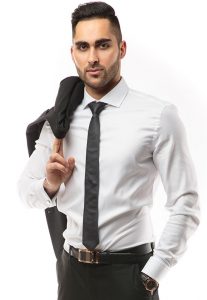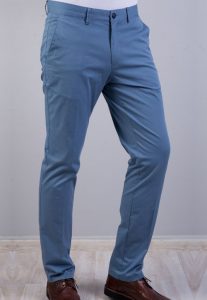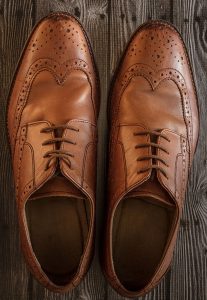
Interestingly, anecdotal studies show that during the few seconds of a first impression one of the greatest detractors to individual credibility is poor fit. It is undoubtedly to your benefit to find clothes that fit and when this is not possible, you may need to consider alterations or custom-made garments. This means identifying your body type and the look you wish to achieve. But before we begin, let’s take a quick look at how fashion and image differ.
What’s the Difference Between Fashion and Image?
Fashion and image are two different concepts. Fashion relates to the external and it is subject to change at any time. It can change with the seasons, or it may shift or evolve if the old trend has played itself out and a new trend catches on.
How you choose to utilize fashion is a very personal issue. You may find delight in adopting the latest styles as often as you can. Conversely, you might be the sort of person who loathes keeping up with the latest fashion. It really doesn’t matter because eventually fashion morphs into trends and then into classics so sooner or later in this cycle most people will be wearing at least one item in a different style!
Regardless of how you feel about fashion, your image is another matter. Whether or not you want it to, the clothing you wear does affect the image you portray to the world. Details, such as maintaining proper hygiene, carrying yourself with confidence, and wearing clothes that fit correctly, may impact the way other people think of you. These factors can also affect the way you feel about yourself and you may then project that feeling outward to others.
According to Inc.com creative executive Molly St. Louis, the clothing you wear doesn’t just affect the way you feel about yourself. It can also change the way you perform. Dressing professionally, for instance, may increase your capacity to think abstractly and creatively. Clearly, putting some time and thought into your attire is an investment worth making.
It becomes evident therefore that the way that you dress has an impact on how others perceive you and how you perceive yourself. By wearing clothes that suit your lifestyle, you may find it easier to navigate your life in specific ways. Dressing appropriately and dressing well can also lead to more opportunities in specific areas of one’s life, such as interviews, career, networking and even meeting new people. In many cases, others are likely to take you more seriously when you are wearing clothing that meets the expected tone of a situation. Ultimately, the effort you put forth to be well-dressed could pay off for you in many different ways throughout your lifetime.
Determining Your Body Type
Before you start shopping, you need to be able to identify your body type. This knowledge helps you to find garments that fit you properly. Taking this step first also saves you a lot of time and spares you from unnecessary frustration.

Image source: bespokeunit.com
Let’s start with height and frame or build. Generally, the menswear manufacturers consider short to be 5’5” and shorter, medium/average height to be about 5’6” to 5’10”, and tall to be 5’11” and taller. The main thing to consider if you are not standard height is the best length for your jacket and pant leg. Find a tailor who can help with the appropriate length for your tailored pieces.
A man with a slender frame is generally slight and thin and may find it challenging to gain either muscle or weight. He needs to choose well fitting, tailored clothing to help construct his desired shape. A person with a medium build and naturally toned muscles looks really good in well-proportioned slim-fit suits and stretch fabrics such as golf shirts which enhance his shape. An individual with a more stocky or rounded build will generally have more body fat than others and needs to pay great attention to fit as he can look 7lbs slimmer in a well-cut suit or blazer.
How Clothes Should Fit a Man
Whether you’re wearing a suit or a t-shirt and jeans, it’s essential to know how your clothes should fit your body. Here are some guidelines:

Suits
A suit that fits well gives you the appearance of being slimmer and taller; you may look and feel more confident wearing it. When you are wearing a current style suit, be aware that the fit is much closer to the body than your older suits. The shoulder seam should fit at the point where the horizontal shoulder meets the vertical arm and the sleeve falls straight to the cuff. The lapels should lie flat over your chest not pull and tug when buttoned and the jacket is indented at the waist. The pants should taper and skim just above the tops of your toes. Don’t buy or keep jackets that don’t fit your shoulders. A good rule of thumb when buying any tailored garments: the fabric must glide over the body. If you can pinch more than one inch of material when standing, they are too large for your frame.

Dress Shirts
Your shoulders should line up perfectly with the shoulder seams of the shirt. You need to be able to raise your arms comfortably, but excess fabric that billows around your middle, sides, back or sleeves is not useful and adds visual weight. Button-down shirts should be worn without a tie as they are essentially a business casual shirt. Your collar stays should make the collar stand crisply up towards your jaw, framing the neck.

Dress Pants (Trousers)
Find pants that fit without the need for a belt but any pant with loops needs a belt. A pant which bags and sags around the seat, can be altered but might never fit comfortably. Try on a smaller size or a different designer. A tapered leg that doesn’t cling to the knee or calf is always correct. If they puddle over the shoe get a tailor to alter the length; they should fall neatly to the rim of the shoe.

Dress Shoes
Shoes are a vital aspect of any attire and good quality leather which breathes will last you years with good maintenance. Shoes should not feel tight or rub against any part of your foot. They should fit snugly while still feeling comfortable.

Blazers
To find a blazer that fits correctly, keep trying them on until the shoulder seams lines up with your shoulders. The rest can be altered. With a traditional length, your fingers should touch the hem of the blazer when your arms are relaxed; the slim-fit blazer ends a little below the crotch and just above or on the curve of your backside.

T-Shirts
The sleeves of a t-shirt should fall between your shoulder and your elbow and fit snugly. The bottom of the shirt should land right below your belt so that it stays put under a shirt or looks good worn as an over shirt. The shirt should fit at the sides, but be wide enough to be comfortable.

Jeans
To determine your correct waist size in jeans, you may need to try on several designers as they all have their own fit. Your stomach shouldn’t hang over the top of the jeans when they are zipped up or buttoned. Tapered or slim jeans generally look better than baggier options and fit closer to the body under the buttocks and at the front and sides than dress pants. The hem of your jeans should barely graze the tops of your shoes.
Should Age Determine Your Look?
Although you certainly don’t have to follow strict fashion guidelines with regard to age, applying a little common sense to different circumstances may be helpful. Dressing to meet the norms of your age range can make all the difference on the job.
As you approach your mid 40s and beyond, it is typically advisable to take stock of your wardrobe and make some changes. You might want to choose colors and patterns that are a bit more classic than the clothes you are used to wearing. You might also want to upgrade your clothing choices to those of higher quality, particularly if you work in business or finance. No matter how much you loved wearing cargo shorts and casual shirts in your 20s, and regardless of how relaxed your job is, that sort of attire becomes less appropriate as you become more experienced. If you choose not to abandon it, you should be aware that people may take you less seriously.
Custom-Made Clothing
If you have trouble finding clothes that fit and you can afford it, having your clothes made to measure could be optimal. In fact, by choosing this strategy, you might save money in the long run. You’ll avoid buying clothes that don’t fit and that you can’t wear and this also spares you from much frustration and wasted time. Especially for garments that you wear frequently, you may want to consult a seamstress or tailor about getting them custom made.
Alterations/Tailoring: How to Adjust Clothing to Fit Your Body
Another option is to bring the clothes you have to a tailor for adjustments. Like ordering clothing custom-made to your body, professional alterations could save you money and time overall.
Make sure that you find a tailor with a solid reputation and be sure that you can communicate well with each other. You might ask for recommendations from a local dry cleaner or department store you trust. Once you have found a tailor you feel comfortable with, you need to be realistic about how much that person can do with a given item.
Alterations might comprise a variety of handiwork, including replacing zippers, adjusting the length of pants legs, and replacing a collar. Some changes are simple, such as taking in a side seam or replacing a button. Others, such as altering the length and shoulders of a jacket, are far more complex and require a professional with an advanced skill set.
Taking clothing out is much trickier. Very occasionally a professional may be able to find some material (such as from a side seam or inside a waistband) which can be used to make the piece larger in another area.
A basic rule is to take in only one size. More than that could compromise the look and style of the piece such as misplaced pockets too close together. Alterations which require too much work are barely worth it and it may be time to replace the garment.
Conclusion
Wearing your clothes well is an integral part of developing a sharp image for yourself. The first step is to know your body type and how clothes should fit you. Then, you can make informed buying decisions when shopping for clothing, as well as when having them altered or custom made. If you take all of these actions, you should feel better in your clothes. By learning how to find and wear clothing properly, you may become better equipped to create the image you genuinely wish to project to the world. Have questions about men’s fashion or image consulting in general? If so, click here to learn more about becoming an image consultant.



